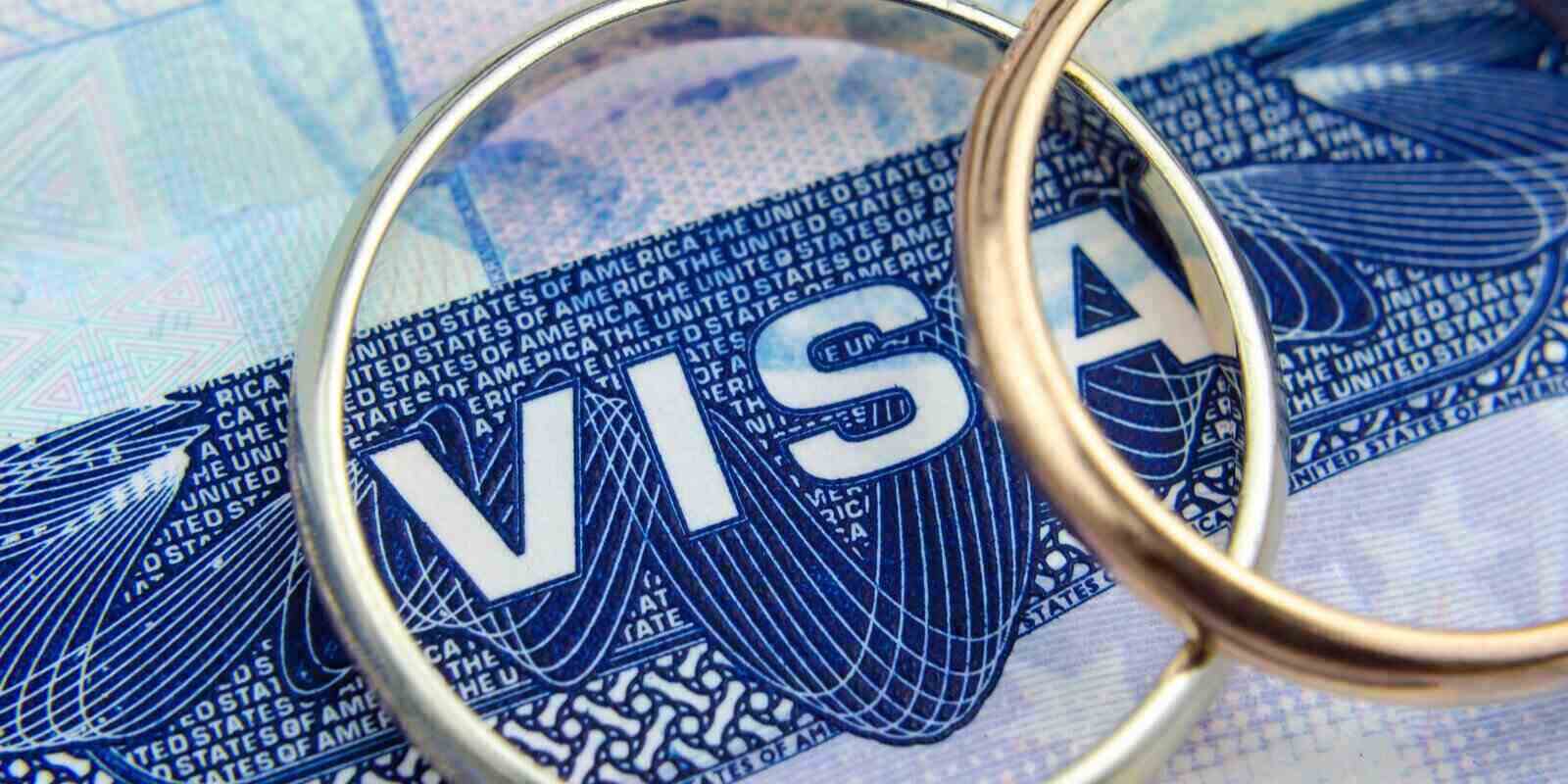If you are a US citizen intending to bring your foreign citizen fiancé(e) to the US with the aim of getting married, you will need to apply for a K-1 fiancé(e) visa. A K-1 visa holder is allowed to enter the United States with the intention of marrying.
After a successful K-1 visa application, your alien fiancé(e) will be entitled to visit and reside with you in the United States as long as you intend to marry before the visa expires. The K-1 fiancé visa is technically categorized as a nonimmigrant visa, which means that the visa is only valid for a limited period of time.
Because the K-1 fiancé visa limits foreign applicants to a 90-day stay, foreign citizens who seek to live permanently in the United States must also apply for a complete immigrant visa – such as a marriage green card. According to United States immigration law, if a K-1 visa holder does not marry their U.S. citizen fiancé(e) within the designated 90 day period, then they are compelled by law to leave the United States.
How Can I Obtain A K-1 Visa?
 In order to apply for a K-1 fiancé(e) visa, you as a US citizen must sponsor and file an official K-1 visa petition on behalf of your alien fiancé. This will entail submitting an official I-129F petition form to the local USCIS (United States Citizenship and Immigration Services) office. When your fiancé(e) visa petition is granted, it will be submitted to the NVC (National Visa Center), where your fiancé(e) must file a formal application and meet with a Consular Officer in person at their local US Embassy or Consulate.
In order to apply for a K-1 fiancé(e) visa, you as a US citizen must sponsor and file an official K-1 visa petition on behalf of your alien fiancé. This will entail submitting an official I-129F petition form to the local USCIS (United States Citizenship and Immigration Services) office. When your fiancé(e) visa petition is granted, it will be submitted to the NVC (National Visa Center), where your fiancé(e) must file a formal application and meet with a Consular Officer in person at their local US Embassy or Consulate.
There are a number of ways for U.S. citizens to file visa applications on behalf of a foreign national spouse or fiancé(e) who wants to move to the country under US immigration rules. For US citizens, a popular technique is to apply for a marriage visa and then marry their fiancé(e) in a foreign nation. This is because when it comes to applying for a marriage green card, priority is given to foreign spouses of US citizens. Depending on the circumstances, that method may not always be possible. For example, some countries prohibit interfaith or same-sex weddings, making marriage in the United States the only legal option for a couple.
Who Can Qualify For A K-1 Visa?
To be eligible for a K-1 fiancé(e) visa, you must demonstrate not only your full eligibility but also your plan to marry within the 90 day time limit.
The K-1 fiancé(e) visa has always been one of the simpler visas to apply for. However, evidence suggests that in recent years the K-1 visa application procedure has become more stringent, with fewer applications receiving approval. Before you apply, it’s a good idea to confirm that you have the appropriate proof to support your application. You and your foreign citizen fiancé(e) are not eligible for the K-1 fiancé(e) visa if you are already married, if you are planning to marry outside the United States, or if your foreign citizen fiancé(e) is a current legal resident United States.
If you are not elligible to apply for a K-1 visa, you may be able to apply for the K-3 foreign spouse visa. The K-3 foreign spouse visa, like the K-1, is a temporary nonimmigrant visa that permits the visa holder to stay in the United States for a total of two years. The scope of this fiancé visa is quite specific, and while it is a limited visa, it is very explicit about how and when it can be used.
What Is Required In Order To Apply For A K-1 Visa?
As a US citizen, you must formally sponsor your foreign partner by submitting a K-1 visa petition to USCIS. The NVC will then require your partner to submit an official K-1 visa application and attend a visa interview at the US Embassy or Consulate in their home country. Non-immigrant visa applicants may be able to bring their dependent children with them by filing a K-2 visa for K-1 dependents. The K-2 visa application process is similar to the K-1 application process.
What Do You Need To Apply For A K-1 Visa?
If you meet the following criteria, you may be able to bring your foreign partner to the United States for the purpose of marriage:
- You are a citizen of the United States of America. You will not be eligible to apply for or petition for the K-1 fiancé(e) visa if you are not a US citizen but have a green card and lawful permanent residence status in the United States. However, if that is the case, you may instead be able to apply for a CR1 marriage visa.
- You plan to marry your fiancé(e) within 90 days of his or her entry to the United States as a K-1 visa holder. As the US citizen sponsor, it is your obligation to persuade both the USCIS and the Consular Officers that you and your partner are in a genuine relationship and that you both intend to marry within 90 days of entering the US. This procedure is in place to prevent false marriages for the express purpose of immigration, and if you fail to demonstrate that you and your partner have a real relationship, your petition may be dismissed.
- In the United States, you are both legally free to marry. If you’re applying for a K-1 visa and have previously been married to another person, you’ll need to show documentation that any past marriages were ended lawfully. In order to prove to the USCIS and Consular Officers that you are legally free to marry your new fiancé(e), you will need to present proof of death, divorce, or annulment with documents such as a divorce decree or death certificate.
- Within the last two years, you must have met your fiancé(e) at least once. Engaged couples applying for the K-1 visa must show that they met in person during the two-year period prior to filing their visa petition. You do not need to show that you have known each other or been in a relationship for the past two years; all you need to show is that you have met in person at least once during that time period. In certain cases, such as if the meeting would violate your fiancé’s country’s cultural norms and customs, or if the meeting would cause you severe hardship, you may be eligible to request a waiver of the in-person meeting.
- You have enough money to meet the minimum income standards. Many visas are based on the foreign citizen’s ability to sustain themselves financially while in the United States. The K-1 visa, on the other hand, is contingent on the petitioner’s capacity to offer the financial assistance that both they and their fiancé(e) will require in order to live in the United States. Fortunately, the income criteria for the K-1 visa are fairly modest. The petitioner, who submitted form I-129F, must show that you and your spouse can both live comfortably on your existing income. Your current income is computed using your total projected revenue for the current year from all sources.
If you have any questions or concerns regarding the K-1 Visa application process or its requirements, please don’t hesitate to contact our team of professionals at Pride Immigration. We are more than happy to answer your questions and guide you through the K-1 Visa application process in a timely, stress-free fashion.
Beeraj Patel, Esq.
Latest posts by Beeraj Patel, Esq. (see all)
- Impact of Life Changes on Green Card Applications - June 16, 2025
- Common K1 Visa Criminal Background Issues - June 2, 2025
- Does Social Media Have an Impact on Your K1 Visa Application? - May 19, 2025
